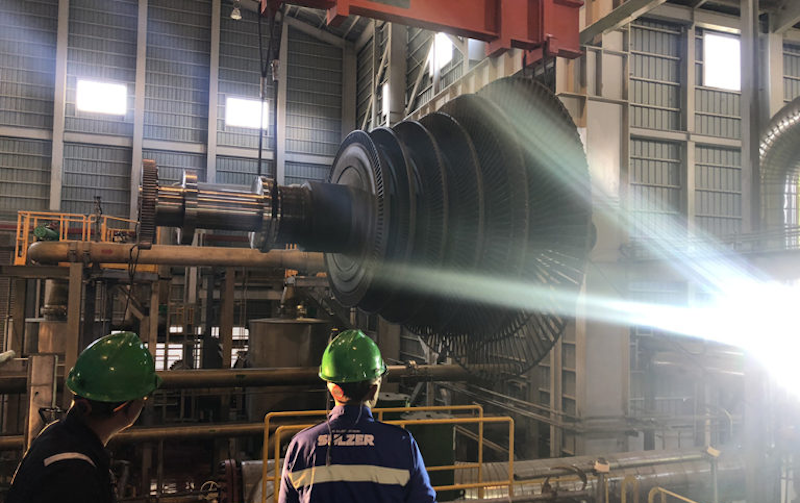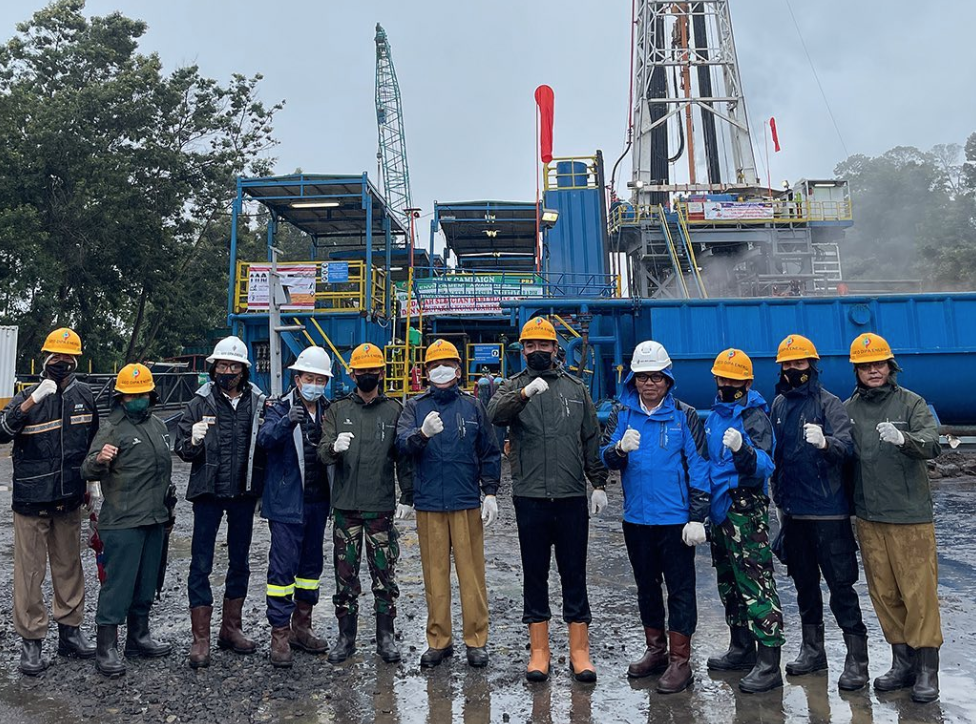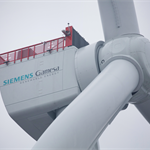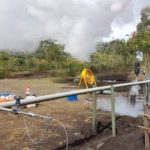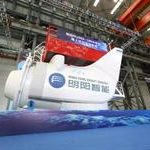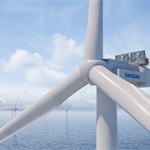Servicing a turbine of remote geothermal plant in West Java
Energy Disrupter
Servicing turbines while keeping downtime to a minimum is crucial for operators of geothermal plants, as described here by service firm Sulzer.
In an article shared already in February 2021, the company Sulzer described its work on a remote geothermal steam turbine inspection. Given the location of the geothermal resources, a lot of the geothermal power plants are located in remote, mountainous areas. For maintenance teams, this can present a considerable challenge.
Overhauling a turbine also means that it is not producing electricity during that time, a rather costly undertaking and loss of income for the period. It is therefore in the interest of plant operators to minimize the downtime of the plant with the required and planned maintenance schedule for turbines and equipment.
One site in West Java, Indonesia, operating a 60 MW generator, the operator was looking to complete a scheduled biennial inspection and overhaul on the steam turbine as well as the hot well pump and the generator itself. The on-site maintenance team expected this to be completed within 20 days. According to Sulzer, it offered to complete the work in 14 days, a significant shorter period. To put this in context, if you were to assume that you won 6 days of full operations this would be 144 hours times 60 MW of generation capacity, meaning a production of 8,640 MWh in won production. If you were then to assume an electricity price of USD 0.07/ kWh this would translate roughly in a “won” income of around USD 600,000. A significant amount saved by faster maintenance work.
Sulzer submitted a comprehensive tender that detailed all the work that would be completed and a timeline that would save the power station a considerable amount of downtime. The timing was of great importance because the outage has to be planned well in advance so that other generating facilities can cover the reduction in generating capacity.
Traditionally, the work on servicing turbines is done in specialised service centers, yet with the remote locations in Indonesia, Sulzer had developed a specialist mobile service that can be deployed to the station.
Having been awarded the contract to complete the maintenance work, Sulzer planned the project down to the last detail in conjunction with the on-site team. In all, Sulzer had 120 personnel at the power station who worked two shifts to minimize the downtime and deliver on the promised completion date.
In this case, the installation was only four years old, so no major faults were expected, but Sulzer planned to conduct a comprehensive inspection, report any defects and repair them if necessary. The first stage was to transport all of the equipment and tools required for the project up the mountain roads in preparation for the outage.
Microscopic inspection
The inspection of the steam turbine involved opening the casing and removing the rotor so that it could be examined closely, cleaned, and measured. In this case, the rotor blades were sand-blasted to remove any debris, while the bearings were measured for dimensional accuracy. In addition, the engineers carried out a penetrant test and magnetic particle inspection on the bearing journals.
At the same time, an inspection of the hot well pump was carried out as part of the project to replace the bearings, which were supplied by the customer. Even though the instrumentation fitted to the pump showed no signs of a fault, the investigation found a deviation on the pump top bearing housing, which was out of tolerance. This required the bearing housing to be shipped back to the local service center to allow it to be repaired.
Using specialist high-velocity oxygen fuel (HVOF) coating equipment, the repair team built up an additional layer of material that was then machined back to the original specifications of the manufacturer. This ensured that the bearing housing diameter was now an interference fit and suitable to go back into service with the new bearings in place.
The hot well pump is an important part of the geothermal process, comprising a vertical pump with an impeller diameter of approximately 1’500 mm. Without prompt attention, this fault could have developed into a more serious situation, causing more damage and resulting in an unplanned outage.
Successful re-start
Fortunately, the inspection of the generator and the electrical tests concluded that there was no need for any remedial action, allowing all the equipment to be reassembled. Having recommissioned the turbine, the power plant was able to start generating again within the 14 days quoted by Sulzer.
Kusno Baryadi, Field Engineer for Sulzer in Indonesia, concludes: “Our ability to deliver essential periodic maintenance to these remote locations offers customers a considerable saving in time. In this case, the customer was very pleased that Sulzer had saved them nearly a full week of production.”
Source: Sulzer via DesignWorldOnline


